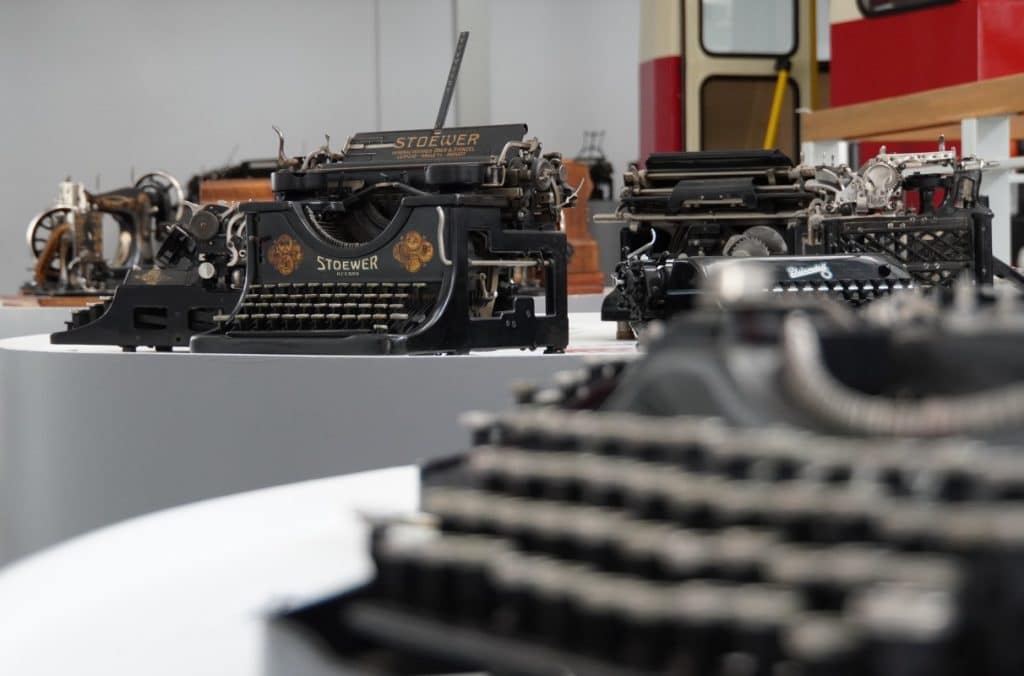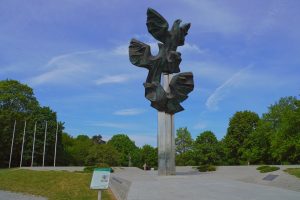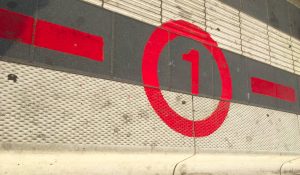Somewhat off the beaten tourist track, the Szczecin Museum of Technology and Communication is located in a former streetcar depot. Lovers of old vehicles, but also lovers of sewing machines and typewriters will get their money’s worth here.
During our visit, work was in progress on an extension to the museum, which will then presumably house the communications section. We could discover during our visit mainly means of transport, typewriters and sewing machines.

The focus of the entire exhibition is placed on the Stoewer company, which once produced in Szczecin.
Stoewer – a Szczecin company history
From 1858 to 1945, the Stoewer company was located in Szczecin. The company is best known for the cars and bicycles they produced, but it actually started quite differently.
Bernhard Stoewer founded a precision mechanical repair workshop in 1958 and began producing sewing machines in the same year. In 1893 the first bicycles were built and from 1903 Stoewer typewriters were produced in Szczecin.

After part of the factory was taken over by the siblings Bernhard (Jr.) and Emil in 1899, production of motor vehicles began. In the same year, the first model, the “Großer Stoewer Motorwagen”, was presented and from then on the company was one of the pioneers of car manufacturing (at that time still in Germany).
The 1920s turned the company into a small-series manufacturer of high-quality and sporty luxury cars, which did not have to hide from the cars of Horch and Mercedes. During the Great Depression, Stoewer managed to survive through sound financial policies and an understanding that it did not have to compete with the mass market. Many other car manufacturers did not succeed in this.

From the mid-1930s, the Szczecin-based company was involved in armaments policy and had to help rearm the Wehrmacht. The company’s most frequently built vehicle, the “Leichte Einheits-PKW” (LEPKW) with all-wheel drive, was produced during this period. Even BMW-Werke in Eisenach and Hanomag-Werke in Hanover produced this type of car under license.
After the end of the Second World War, Szczecin became part of Poland. The plant facilities were dismantled and shipped to the USSR. The company had to be closed.
Cars, Trams and more
When you enter the Szczecin Museum of Technology and Communication, you find yourself in a large hall, which at first glance is full of cars and streetcars. Only during the tour we noticed the motorcycles, sewing machines and typewriters.

Fans and connoisseurs will certainly recognize many of the exhibits immediately at first glance. We were honestly quite happy to be able to read numerous boards, which also contained German explanations and descriptions.
Stoewer Automobile – what a dream of car
To say it right up front. I found my dream car on the tour. No idea what type it is, how fast it goes or if it is even from Stoewer. I just love the color and the shape. (Yes, I know – typical woman).

The world’s largest Stoewer collection of automobiles in the Szczecin Museum of Technology and Communication shows exhibits from the entire Stoewer company history. 60 different types of vehicles were manufactured in Szczecin: Electromobiles, racing cars, luxury sedans, buses, trucks, robust passenger cars.
In this museum there are 7 carriages, 50 sewing machines, 28 typewriters, 7 bicycles and numerous small exhibits from spare parts to photos. A large part of the collection comes from a private collection, which was bought in 2019 and brought to Szczecin.

I was impressed by the Stoewer V5 of the 1932 model year. This type of car was one of the first vehicles produced at the Stoewer Works in Szczecin. The car had a top speed of 80 km/h and was very popular among buyers also because of the price.

The vehicle with the beautiful name “The Griffin” looks somewhat more noble and imposing. After Röhr-Werke had to close in March 1935, Stoewer took over production. Only half a year later, the Stoewer “Greif Junior”, which was identical in construction to the “Röhr Junior”, rolled out of the factory. A year later, the “revised” version came onto the market. This was more streamlined and is said to have been capable of speeds of up to 100 km/h. About 4000 cars of the Greif series were produced, today there are said to be 14 still in existence.

The motorcycles that can be seen in the Szczecin Museum of Technology and Communication are also very special specimens. The model Alba, is the oldest motorcycle that has been produced near Szczecin. The model, which actually looks like a bicycle, dates back to 1919 and has neither clutch nor gearbox.

Prototypes
What I find very special is that in the Szczecin Museum of Technology and Communication you can also see prototypes that never made it to production maturity.

For example, there is the Junak B 23 cargo motorcycle, a prototype built by the Szczecin Motorcycle Works in 1960.
Or the six-wheeled amphibious vehicle with four-wheel drive developed at the Army Institute of Vehicle and Armor Technology in Sulejówek. The idea was to use this light all-terrain vehicle to transport casualties from battlefields.

The Szczecin transport system
I found the development of buses and streetcars in Szczecin very exciting. In 1897, the first electric streetcar ran in Szczecin.

The oldest streetcar in the museum’s collection is Wagon 144. In total, you can discover seven different types of streetcars, try out the differently comfortable benches and take a look inside the driver’s cab.

There are also buses to see, which transported the Szczecin population for many years. We took a seat in one bus and realized that the issue of “legroom” is really overrated today. Those were still cozy times, when one was on the road with this bus.

Address:
Niemierzyńska 18A
71-441 Szczecin, Polen
Opening hours:
Tuesday: 10-15 h
Wednesday, Thursday: 10-16 h
Friday, Saturday: 10-18 h
Sunday: 10-16h
Monday: closed
Admission fees:
Adults: 16 PLN












Leave a Reply